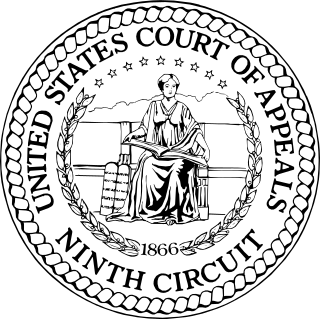
Spamming is the use of messaging systems to send multiple unsolicited messages (spam) to large numbers of recipients for the purpose of commercial advertising, for the purpose of non-commercial proselytizing, for any prohibited purpose, or simply sending the same message over and over to the same user. While the most widely recognized form of spam is email spam, the term is applied to similar abuses in other media: instant messaging spam, Usenet newsgroup spam, Web search engine spam, spam in blogs, wiki spam, online classified ads spam, mobile phone messaging spam, Internet forum spam, junk fax transmissions, social spam, spam mobile apps, television advertising and file sharing spam. It is named after Spam, a luncheon meat, by way of a Monty Python sketch about a restaurant that has Spam in almost every dish in which vikings annoyingly sing "Spam" repeatedly.
An electronic mailing list or email list is a special use of email that allows for widespread distribution of information to many Internet users. It is similar to a traditional mailing list – a list of names and addresses – as might be kept by an organization for sending publications to its members or customers, but typically refers to four things:
Various anti-spam techniques are used to prevent email spam.

The Controlling the Assault of Non-Solicited Pornography And Marketing (CAN-SPAM) Act of 2003 is a law passed in 2003 establishing the United States' first national standards for the sending of commercial e-mail. The law requires the Federal Trade Commission (FTC) to enforce its provisions. Introduced by Republican Conrad Burns, the act passed both the House and Senate during the 108th United States Congress and was signed into law by President George W. Bush in December of 2003.

Mobile phone spam is a form of spam, directed at the text messaging or other communications services of mobile phones or smartphones. As the popularity of mobile phones surged in the early 2000s, frequent users of text messaging began to see an increase in the number of unsolicited commercial advertisements being sent to their telephones through text messaging. This can be particularly annoying for the recipient because, unlike in email, some recipients may be charged a fee for every message received, including spam. Mobile phone spam is generally less pervasive than email spam, where in 2010 around 90% of email is spam. The amount of mobile spam varies widely from region to region. In North America, mobile spam steadily increased after 2008 and accounted for half of all mobile phone traffic by 2019. In parts of Asia up to 30% of messages were spam in 2012.

Email spam, also referred to as junk email or simply spam, is unsolicited messages sent in bulk by email (spamming).
The Australian Communications and Media Authority (ACMA) is an Australian government statutory authority within the Communications portfolio. ACMA was formed on 1 July 2005 with the merger of the Australian Broadcasting Authority and the Australian Communications Authority.
Internet censorship in Australia is enforced by both the country's criminal law as well as voluntarily enacted by internet service providers. The Australian Communications and Media Authority (ACMA) has the power to enforce content restrictions on Internet content hosted within Australia, and maintain a blocklist of overseas websites which is then provided for use in filtering software. The restrictions focus primarily on child pornography, sexual violence, and other illegal activities, compiled as a result of a consumer complaints process.
Email marketing is the act of sending a commercial message, typically to a group of people, using email. In its broadest sense, every email sent to a potential or current customer could be considered email marketing. It involves using email to send advertisements, request business, or solicit sales or donations. Email marketing strategies commonly seek to achieve one or more of three primary objectives, to build loyalty, trust, or brand awareness. The term usually refers to sending email messages with the purpose of enhancing a merchant's relationship with current or previous customers, encouraging customer loyalty and repeat business, acquiring new customers or convincing current customers to purchase something immediately, and sharing third-party ads.
The term opt-out refers to several methods by which individuals can avoid receiving unsolicited product or service information. This option is usually associated with direct marketing campaigns such as e-mail marketing or direct mail. A list of those who have opted out is called a Robinson
Email harvesting or scraping is the process of obtaining lists of email addresses using various methods. Typically these are then used for bulk email or spam.
Wayne Mansfield, of Perth, Western Australia, was the head of direct marketing business T3 Direct Marketing, operating under a series of two-dollar companies, and in 2005 became the first Australian to be prosecuted for email spamming.

A feedback loop (FBL), sometimes called a complaint feedback loop, is an inter-organizational form of feedback by which a mailbox provider (MP) forwards the complaints originating from their users to the sender's organizations. MPs can receive users' complaints by placing report spam buttons on their webmail pages, or in their email client, or via help desks. The message sender's organization, often an email service provider, has to come to an agreement with each MP from which they want to collect users' complaints.
The history of email spam reaches back to the mid-1990s when commercial use of the internet first became possible - and marketers and publicists began to test what was possible.
Contact scraping is the practice of obtaining access to a customer's e-mail account in order to retrieve contact information that is then used for marketing purposes.
The Fighting Internet and Wireless Spam Act, is Canada's anti-spam legislation that received Royal Assent on December 15, 2010. The Act replaced Bill C-27, the Electronic Commerce Protection Act (ECPA), which was passed by the House of Commons, but died due to the prorogation of the second session of the 40th Canadian Parliament on December 30, 2009. The Act went into effect July 1, 2014.

Gordon v. Virtumundo, Inc., 575 F.3d 1040, is a 2009 court opinion in which the United States Court of Appeals for the Ninth Circuit addressed the standing requirements necessary for private plaintiffs to bring suit under the Controlling the Assault of Non-Solicited Pornography and Marketing Act of 2003, or CAN-SPAM Act of 2003, 15 U.S.C. ch. 103, as well as the scope of the CAN-SPAM Act's federal preemption. Prior to this case, the CAN-SPAM Act's standing requirements had not been addressed at the Court of Appeals level, and only the Fourth Circuit had addressed the CAN-SPAM Act's preemptive scope.
People tend to be much less bothered by spam slipping through filters into their mail box, than having desired e-mail ("ham") blocked. Trying to balance false negatives vs false positives is critical for a successful anti-spam system. As servers are not able to block all spam there are some tools for individual users to help control over this balance.

Omega World Travel, Inc. v. Mummagraphics, Inc., 469 F.3d 348, is a case in the United States Court of Appeals for the Fourth Circuit in which Mummagraphics, Inc. is sued by Omega World Travel, Inc. (Omega) and Cruise.com after Mummagraphic alleged that they received 11 commercial e-mail messages in violation of the Controlling the Assault of Non-Solicited Pornography and Marketing (CAN-SPAM) Act of 2003 as well as Oklahoma state law. In the initial filing, the United States District Court for the Eastern District of Virginia had awarded summary judgment to Omega on all of Mummagraphics' claims finding that the commercial emails from Omega did not violate the CAN-SPAM Act, and that the CAN-SPAM Act preempted Oklahoma state law. The Court of Appeals affirmed.
A cold email is an unsolicited e-mail that is sent to a receiver without prior contact. It could also be defined as the email equivalent of cold calling. Cold emailing is a subset of email marketing and differs from transactional and warm emailing.






